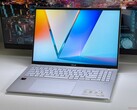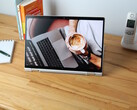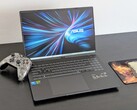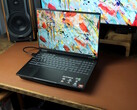
Asus Vivobook 16 laptop review: AI features at the forefront – genuine productivity boost or marketing hype?
AI is said to make everything better.
Priced at €999, the Vivobook 16 might not excel in display quality, ports, or other features, but the new AI processors certainly deliver a hefty dose of marketing appeal.Christian Hintze, ✓ Louise Burke (translated by DeepL / Ninh Duy) Published 🇩🇪 🇫🇷 ...
Verdict – better suited for office tasks than multimedia
The Vivobook 16 is clearly designed around its AI-driven processor, featuring a range of AI-powered tools and apps to enhance productivity. However, beyond this, the rest of the laptop feels decidedly average, making it a reliable option for office tasks, but not much beyond that.
For nearly €1,000, the Vivobook 16 falls short of expectations. The display's colour range falls short of even basic sRGB support, 3D performance is significantly below average, battery life is unimpressive, and the ports are limited and slow. Additionally, the build quality doesn't quite reach premium standards. It seems the laptop is currently overpriced, with Asus effectively charging a premium for its in-house AI apps and features.
Pros
Cons
Price and availability
The Asus Vivobook 16 M1607K is available for €999, for example at Notebooksbilliger.
Potential alternatives compared
Image | Model / Review | Price | Weight | Height | Display |
|---|---|---|---|---|---|
| Asus Vivobook 16 M1606K AMD Ryzen AI 7 350 ⎘ AMD Radeon 860M ⎘ 16 GB Memory, 1024 GB SSD | Amazon: 1. $514.49 ASUS Vivobook 16 Laptop, 16�... 2. $1,183.85 ASUS Vivobook S16 AI PC Lapt... 3. $1,279.00 ASUS Vivobook S16 Copilot+ A... | 1.9 kg | 19.9 mm | 16.00" 1920x1200 142 PPI IPS | |
| Lenovo ThinkBook 16 G7 IML Intel Core Ultra 5 125U ⎘ Intel Graphics 4-Core iGPU (Arrow Lake) ⎘ 16 GB Memory, 512 GB SSD | Amazon: $825.89 List Price: 750 USD | 1.8 kg | 17.5 mm | 16.00" 1920x1200 142 PPI IPS | |
| HP Pavilion 16-ag0057ng AMD Ryzen 5 8540U ⎘ AMD Radeon 740M ⎘ 16 GB Memory, 1024 GB SSD | Amazon: 1. $89.99 GD03XL N66215-005 Replacemen... 2. $769.00 HP Pavilion Plus 16 inch Lap... 3. $24.95 mCover Case ONLY Compatible ... List Price: 730 EUR | 1.7 kg | 18.6 mm | 16.00" 1920x1200 142 PPI IPS | |
| Xiaomi RedmiBook Pro 16 2024 Intel Core Ultra 7 155H ⎘ Intel Arc 8-Core iGPU ⎘ 32 GB Memory, 1024 GB SSD | Amazon: 1. $12.98 Puccy 2 Pack Touch Pad Film ... 2. $20.98 Puccy 2 Pack Film Protector,... 3. $18.98 Puccy 2 Pack Back Protector ... List Price: 957€ | 1.9 kg | 15.9 mm | 16.00" 3072x1920 226 PPI IPS | |
| Ninkear A16 Pro AMD Ryzen 7 8845HS ⎘ AMD Radeon 780M ⎘ 32 GB Memory, 1000 GB SSD | Amazon: 1. $35.00 Laptop Keyboard for Ninkear ... 2. $18.98 Puccy 2 Pack Film Protector,... 3. $20.98 Puccy 2 Pack Film Protector,... List Price: 799 Euro | 1.8 kg | 24 mm | 16.00" 2560x1600 189 PPI IPS | |
| Lenovo ThinkBook 16 G7 QOY 21NH0005GE Qualcomm Snapdragon X Plus X1P-42-100 ⎘ Qualcomm SD X Adreno X1-45 1.7 TFLOPS ⎘ 16 GB Memory, 512 GB SSD | Amazon: $740.48 List Price: 960 Euro | 1.9 kg | 15.2 mm | 16.00" 1920x1200 142 PPI IPS LED |
Table of Contents
- Verdict – better suited for office tasks than multimedia
- Specifications
- Case & features - deceptive military standard
- Input devices - additional touch functions
- Display – Vivobook's colour range falls short of sRGB
- Performance - AI-powered productivity
- Emissions & power – single fan
- Notebookcheck overall rating
Compared to the more premium Vivobook S16, which is lighter, offers better ports and boasts a superior display, the Vivobook 16 serves as the more affordable budget option – assuming nearly €1,000 can still be considered budget-friendly. In the Vivobook 16 brochure, Asus heavily promotes its AI features (from Windows 11 24H2 and its own software) across 10 pages, with the Ryzen AI 7 350 at the core of its marketing strategy. But aside from its AI capabilities, what does this laptop really have to offer?
Specifications
Case & features - deceptive military standard
The Vivobook 16 is available in two colour options: dark blue and silver. In our test model, only the top and base are silver, which are smooth and prone to fingerprints, while the textured, softer underside is finished in a very light grey. All components are made of plastic.
At just under 2 cm in thickness, the Vivobook 16 is slightly bulkier than most of its direct competitors, which tend to be thinner. In terms of overall dimensions, however, the differences are minimal. With a weight of 1.9 kg, it leans towards the heavier side of the spectrum.
The underside is secured by 10 screws of two different lengths, making it easy to remove. Inside, you'll have access to the cooling fan, M.2 SSD slot, the Wi-Fi module and an empty single RAM slot for future upgrades.
The base exhibits a slight flex but remains stable, with only the occasional creak. In contrast, the 180-degree lid, despite its military-grade certification, shows its fragility as even the slightest bend causes the plastic bezel of the display to lift.
The Vivobook 16 offers four USB ports, two of which are USB Type-C. However, all USB ports are only 3.2 Gen 1, meaning they transfer data at the USB 3.0 speed of just 5 Gb/s, which feels outdated, especially for the USB-C ports. That said, the Type-C ports do support Power Delivery and DisplayPort. There is no SD card reader, nor is there a LAN port. Similar to the Asus TUF Gaming A16, all the ports, except for one USB-A slot, are located on the left side. This positioning could cause potential interference, especially between the USB-A and the HDMI slots.
Unfortunately, the Vivobook does not support Wi-Fi 6E or even Wi-Fi 7, so you're limited to the 5 GHz and 2.4 GHz networks. The wireless performance is steady, but stays just below 1 Gb/s. The Full HD IR webcam, unlike the one in the Asus TUF Gaming A16, offers decent sharpness and low to moderate colour deviations, and it also features a physical shutter.
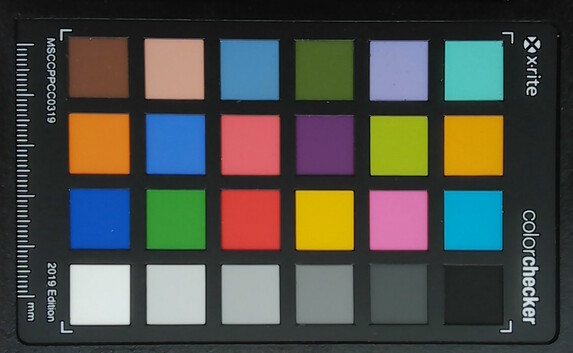
Sustainability
Asus offers no information, even upon request, about the sustainability of the materials used or the inclusion of recycled components. However, the packaging is nearly entirely made from compostable cardboard.
Input devices - additional touch functions
The keys measure 1.6 x 1.6 cm, with the arrow and F keys halved in height, and the latter also being narrower. Key travel is 1.7 mm, providing noticeable feedback with moderate noise, although the spacebar is slightly louder. There’s no backlighting, but the bright key labels are easy to read in normal conditions.
The touchpad has been slightly enlarged, and the additional Smart Gestures feature is a convenient touch. Swiping along the left edge adjusts the volume, while the right edge controls brightness, and swiping along the top scrolls through content. The clicks feel somewhat shallow, and the left-click has a slight rattle, but they aren’t overly loud.
Display – Vivobook's colour range falls short of sRGB
Asus uses a matte 1,200p 16:10 IPS panel with a refresh rate of just 60 Hz and there appear to be no alternative models available. The stated brightness of 300 nits is confirmed, with a decent illumination of 89 percent.
The black levels and contrast are solid, but the panel is quite slow. There's no PWM flickering and backlight bleeding is barely noticeable.
A notable weakness of the display is its poor colour gamut coverage, with only 55 percent of sRGB – clearly below average – especially for a multimedia laptop. This is where slightly more expensive options like the Xiaomi RedmiBook Pro or even the more affordable Ninkear A16 Pro outperform it.
| |||||||||||||||||||||||||
Brightness Distribution: 89 %
Center on Battery: 325 cd/m²
Contrast: 1358:1 (Black: 0.24 cd/m²)
ΔE ColorChecker Calman: 6.48 | ∀{0.5-29.43 Ø4.78}
calibrated: 4.92
ΔE Greyscale Calman: 3.85 | ∀{0.09-98 Ø5}
38% AdobeRGB 1998 (Argyll 3D)
55.3% sRGB (Argyll 3D)
36.8% Display P3 (Argyll 3D)
Gamma: 2.79
CCT: 6739 K
| Asus Vivobook 16 M1606K B160UAN04.3 (AUOA5AB), IPS, 1920x1200, 16", 60 Hz | Lenovo ThinkBook 16 G7 IML LEN160WUXGA, IPS, 1920x1200, 16", 60 Hz | HP Pavilion 16-ag0057ng CMN1640, IPS, 1920x1200, 16", 60 Hz | Xiaomi RedmiBook Pro 16 2024 TL160MDMP03_0, IPS, 3072x1920, 16", 165 Hz | Ninkear A16 Pro cso1623, IPS, 2560x1600, 16", 120 Hz | Lenovo ThinkBook 16 G7 QOY 21NH0005GE LEN160WUXGA , IPS LED, 1920x1200, 16", 60 Hz | |
|---|---|---|---|---|---|---|
| Display | 12% | 13% | 129% | 83% | ||
| Display P3 Coverage (%) | 36.8 | 41.6 13% | 41.6 13% | 98.8 168% | 68.7 87% | |
| sRGB Coverage (%) | 55.3 | 61.2 11% | 62.4 13% | 100 81% | 97.6 76% | |
| AdobeRGB 1998 Coverage (%) | 38 | 43 13% | 43 13% | 89.9 137% | 71.1 87% | |
| Response Times | 36% | 9% | 12% | 51% | 12% | |
| Response Time Grey 50% / Grey 80% * (ms) | 36 ? | 18.4 ? 49% | 30.7 ? 15% | 39.2 ? -9% | 16.4 ? 54% | 27 ? 25% |
| Response Time Black / White * (ms) | 21.4 ? | 16.5 ? 23% | 20.8 ? 3% | 14.6 ? 32% | 11.2 ? 48% | 21.6 ? -1% |
| PWM Frequency (Hz) | ||||||
| Screen | -22% | 11% | 32% | 21% | 3% | |
| Brightness middle (cd/m²) | 326 | 321.2 -1% | 324 -1% | 520 60% | 393.6 21% | 315 -3% |
| Brightness (cd/m²) | 303 | 319 5% | 295 -3% | 510 68% | 398 31% | 298 -2% |
| Brightness Distribution (%) | 89 | 92 3% | 88 -1% | 93 4% | 91 2% | 91 2% |
| Black Level * (cd/m²) | 0.24 | 0.37 -54% | 0.2 17% | 0.35 -46% | 0.44 -83% | 0.17 29% |
| Contrast (:1) | 1358 | 868 -36% | 1620 19% | 1486 9% | 895 -34% | 1853 36% |
| Colorchecker dE 2000 * | 6.48 | 8.7 -34% | 5.13 21% | 2.9 55% | 2.32 64% | 6.5 -0% |
| Colorchecker dE 2000 max. * | 19.42 | 19.85 -2% | 16.11 17% | 6.2 68% | 3.72 81% | 26.5 -36% |
| Colorchecker dE 2000 calibrated * | 4.92 | 1.82 63% | 2.99 39% | 1.1 78% | 1.05 79% | |
| Greyscale dE 2000 * | 3.85 | 9.2 -139% | 4.24 -10% | 4.3 -12% | 2.69 30% | 4.1 -6% |
| Gamma | 2.79 79% | 2.83 78% | 2.3 96% | 2.19 100% | 2.38 92% | 2.33 94% |
| CCT | 6739 96% | 6200 105% | 7318 89% | 7422 88% | 6086 107% | 6064 107% |
| Total Average (Program / Settings) | 9% /
-6% | 11% /
11% | 58% /
50% | 52% /
39% | 8% /
4% |
* ... smaller is better
Asus delivers the panel with noticeable deviations in both grayscale and colour accuracy. While the grayscale improves significantly after manual calibration, the colours still remain inaccurate. As a result, this panel is not ideal for precise image or video editing.
Display Response Times
| ↔ Response Time Black to White | ||
|---|---|---|
| 21.4 ms ... rise ↗ and fall ↘ combined | ↗ 12.8 ms rise | |
| ↘ 8.6 ms fall | ||
| The screen shows good response rates in our tests, but may be too slow for competitive gamers. In comparison, all tested devices range from 0.1 (minimum) to 240 (maximum) ms. » 46 % of all devices are better. This means that the measured response time is similar to the average of all tested devices (20.2 ms). | ||
| ↔ Response Time 50% Grey to 80% Grey | ||
| 36 ms ... rise ↗ and fall ↘ combined | ↗ 17.4 ms rise | |
| ↘ 18.6 ms fall | ||
| The screen shows slow response rates in our tests and will be unsatisfactory for gamers. In comparison, all tested devices range from 0.165 (minimum) to 636 (maximum) ms. » 49 % of all devices are better. This means that the measured response time is worse than the average of all tested devices (31.6 ms). | ||
Screen Flickering / PWM (Pulse-Width Modulation)
| Screen flickering / PWM not detected | |||
In comparison: 53 % of all tested devices do not use PWM to dim the display. If PWM was detected, an average of 8111 (minimum: 5 - maximum: 343500) Hz was measured. | |||
Performance - AI-powered productivity
At its core, the AMD Ryzen AI 7 350 powers the Vivobook, complemented by Microsoft’s Pluton chip, which enables secure storage of keys like passkeys directly on the device. It also comes with 16 GB of RAM (expandable to 32 GB) and a 1 TB SSD. Asus markets the Vivobook as a lightweight AI productivity laptop, though the lacklustre display might limit the content experience.
Test conditions
The MyAsus software provides fan profiles that influence performance. For our tests, we used the standard fan profile. In this mode, the TDP briefly peaks at 50 W before dropping to 40 W. Below is a table showing the TDP values for each fan profile in Cinebench R23.
| Cinebench R23 | Whisper mode | Standard mode | Performance mode | Full speed | battery |
|---|---|---|---|---|---|
| Power consumption peak at start of cycle | 32 W | 50 W | 60 W | 60 W | 39 W |
| Constant power consumption | 27 W | 40 W | 43 W | 35 W |
Processor
Asus uses the AMD Ryzen AI 7 350, a Zen 5 CPU with 8 cores and up to 5 GHz. It also features an integrated XDNA-2 NPU with 50 TOPS for local AI workloads.
In the Cinebench loop, there is a performance drop of around 17 percent during the first few passes, after which performance remains relatively consistent.
Across all CPU tests, the Vivobook 16 ranks in the middle. The Ryzen 5 8540U and the Core Ultra 5 125U are clearly outperformed, while the Core Ultra 7 155H in the RedmiBook leads by a clear margin. The Ryzen 7 8845HS in the Ninkear A16 Pro is on par.
In battery mode, around 6 to 7 percent of CPU performance is lost.
Cinebench R15 multi endurance test
Cinebench R23: Multi Core | Single Core
Cinebench R20: CPU (Multi Core) | CPU (Single Core)
Cinebench R15: CPU Multi 64Bit | CPU Single 64Bit
Blender: v2.79 BMW27 CPU
7-Zip 18.03: 7z b 4 | 7z b 4 -mmt1
Geekbench 6.5: Multi-Core | Single-Core
Geekbench 5.5: Multi-Core | Single-Core
HWBOT x265 Benchmark v2.2: 4k Preset
LibreOffice : 20 Documents To PDF
R Benchmark 2.5: Overall mean
| CPU Performance rating | |
| Xiaomi RedmiBook Pro 16 2024 | |
| Average AMD Ryzen AI 7 350 | |
| Ninkear A16 Pro | |
| Asus Vivobook 16 M1606K | |
| HP Pavilion 16-ag0057ng | |
| Average of class Office | |
| Lenovo ThinkBook 16 G7 IML | |
| Lenovo ThinkBook 16 G7 QOY 21NH0005GE | |
| Cinebench R23 / Multi Core | |
| Xiaomi RedmiBook Pro 16 2024 | |
| Average AMD Ryzen AI 7 350 (12647 - 17899, n=16) | |
| Ninkear A16 Pro | |
| Asus Vivobook 16 M1606K | |
| Average of class Office (1577 - 22808, n=80, last 2 years) | |
| Lenovo ThinkBook 16 G7 IML | |
| HP Pavilion 16-ag0057ng | |
| Lenovo ThinkBook 16 G7 QOY 21NH0005GE | |
| Cinebench R23 / Single Core | |
| Average AMD Ryzen AI 7 350 (1916 - 2006, n=16) | |
| Asus Vivobook 16 M1606K | |
| Xiaomi RedmiBook Pro 16 2024 | |
| Ninkear A16 Pro | |
| HP Pavilion 16-ag0057ng | |
| Average of class Office (708 - 2130, n=80, last 2 years) | |
| Lenovo ThinkBook 16 G7 IML | |
| Lenovo ThinkBook 16 G7 QOY 21NH0005GE | |
| Cinebench R20 / CPU (Multi Core) | |
| Xiaomi RedmiBook Pro 16 2024 | |
| Average AMD Ryzen AI 7 350 (4897 - 6990, n=14) | |
| Ninkear A16 Pro | |
| Asus Vivobook 16 M1606K | |
| Average of class Office (590 - 8840, n=78, last 2 years) | |
| Lenovo ThinkBook 16 G7 IML | |
| HP Pavilion 16-ag0057ng | |
| Lenovo ThinkBook 16 G7 QOY 21NH0005GE | |
| Cinebench R20 / CPU (Single Core) | |
| Average AMD Ryzen AI 7 350 (751 - 784, n=14) | |
| Asus Vivobook 16 M1606K | |
| Ninkear A16 Pro | |
| HP Pavilion 16-ag0057ng | |
| Xiaomi RedmiBook Pro 16 2024 | |
| Average of class Office (285 - 815, n=78, last 2 years) | |
| Lenovo ThinkBook 16 G7 IML | |
| Lenovo ThinkBook 16 G7 QOY 21NH0005GE | |
| Cinebench R15 / CPU Multi 64Bit | |
| Xiaomi RedmiBook Pro 16 2024 | |
| Average AMD Ryzen AI 7 350 (1932 - 2734, n=15) | |
| Asus Vivobook 16 M1606K | |
| Ninkear A16 Pro | |
| Average of class Office (246 - 3380, n=80, last 2 years) | |
| Lenovo ThinkBook 16 G7 IML | |
| HP Pavilion 16-ag0057ng | |
| Lenovo ThinkBook 16 G7 QOY 21NH0005GE | |
| Cinebench R15 / CPU Single 64Bit | |
| Asus Vivobook 16 M1606K | |
| Average AMD Ryzen AI 7 350 (204 - 305, n=15) | |
| Ninkear A16 Pro | |
| HP Pavilion 16-ag0057ng | |
| Xiaomi RedmiBook Pro 16 2024 | |
| Average of class Office (99.5 - 312, n=80, last 2 years) | |
| Lenovo ThinkBook 16 G7 IML | |
| Lenovo ThinkBook 16 G7 QOY 21NH0005GE | |
| Blender / v2.79 BMW27 CPU | |
| Lenovo ThinkBook 16 G7 QOY 21NH0005GE | |
| Average of class Office (158 - 1956, n=80, last 2 years) | |
| HP Pavilion 16-ag0057ng | |
| Lenovo ThinkBook 16 G7 IML | |
| Asus Vivobook 16 M1606K | |
| Average AMD Ryzen AI 7 350 (182 - 386, n=15) | |
| Ninkear A16 Pro | |
| Xiaomi RedmiBook Pro 16 2024 | |
| 7-Zip 18.03 / 7z b 4 | |
| Xiaomi RedmiBook Pro 16 2024 | |
| Ninkear A16 Pro | |
| Average AMD Ryzen AI 7 350 (48124 - 64653, n=14) | |
| Asus Vivobook 16 M1606K | |
| Average of class Office (7532 - 76886, n=81, last 2 years) | |
| HP Pavilion 16-ag0057ng | |
| Lenovo ThinkBook 16 G7 IML | |
| Lenovo ThinkBook 16 G7 QOY 21NH0005GE | |
| 7-Zip 18.03 / 7z b 4 -mmt1 | |
| Asus Vivobook 16 M1606K | |
| HP Pavilion 16-ag0057ng | |
| Average AMD Ryzen AI 7 350 (5544 - 6371, n=14) | |
| Ninkear A16 Pro | |
| Xiaomi RedmiBook Pro 16 2024 | |
| Average of class Office (3046 - 6497, n=80, last 2 years) | |
| Lenovo ThinkBook 16 G7 QOY 21NH0005GE | |
| Lenovo ThinkBook 16 G7 IML | |
| Geekbench 6.5 / Multi-Core | |
| Xiaomi RedmiBook Pro 16 2024 | |
| Ninkear A16 Pro | |
| Average AMD Ryzen AI 7 350 (10774 - 14194, n=15) | |
| Lenovo ThinkBook 16 G7 QOY 21NH0005GE | |
| Asus Vivobook 16 M1606K | |
| Average of class Office (757 - 17846, n=88, last 2 years) | |
| HP Pavilion 16-ag0057ng | |
| Lenovo ThinkBook 16 G7 IML | |
| Geekbench 6.5 / Single-Core | |
| Asus Vivobook 16 M1606K | |
| Average AMD Ryzen AI 7 350 (1874 - 2942, n=15) | |
| Ninkear A16 Pro | |
| HP Pavilion 16-ag0057ng | |
| Xiaomi RedmiBook Pro 16 2024 | |
| Lenovo ThinkBook 16 G7 QOY 21NH0005GE | |
| Average of class Office (462 - 2894, n=89, last 2 years) | |
| Lenovo ThinkBook 16 G7 IML | |
| Geekbench 5.5 / Multi-Core | |
| Xiaomi RedmiBook Pro 16 2024 | |
| Ninkear A16 Pro | |
| Average AMD Ryzen AI 7 350 (6705 - 12968, n=16) | |
| Asus Vivobook 16 M1606K | |
| Average of class Office (1719 - 16999, n=78, last 2 years) | |
| Lenovo ThinkBook 16 G7 IML | |
| HP Pavilion 16-ag0057ng | |
| Lenovo ThinkBook 16 G7 QOY 21NH0005GE | |
| Geekbench 5.5 / Single-Core | |
| Asus Vivobook 16 M1606K | |
| Average AMD Ryzen AI 7 350 (805 - 2155, n=16) | |
| HP Pavilion 16-ag0057ng | |
| Ninkear A16 Pro | |
| Xiaomi RedmiBook Pro 16 2024 | |
| Average of class Office (811 - 2128, n=78, last 2 years) | |
| Lenovo ThinkBook 16 G7 IML | |
| Lenovo ThinkBook 16 G7 QOY 21NH0005GE | |
| HWBOT x265 Benchmark v2.2 / 4k Preset | |
| Average AMD Ryzen AI 7 350 (14 - 22.9, n=14) | |
| Xiaomi RedmiBook Pro 16 2024 | |
| Asus Vivobook 16 M1606K | |
| Ninkear A16 Pro | |
| Average of class Office (1.72 - 26, n=78, last 2 years) | |
| Lenovo ThinkBook 16 G7 IML | |
| HP Pavilion 16-ag0057ng | |
| Lenovo ThinkBook 16 G7 QOY 21NH0005GE | |
| LibreOffice / 20 Documents To PDF | |
| HP Pavilion 16-ag0057ng | |
| Lenovo ThinkBook 16 G7 QOY 21NH0005GE | |
| Average of class Office (41.5 - 129.6, n=78, last 2 years) | |
| Average AMD Ryzen AI 7 350 (43.3 - 88.8, n=14) | |
| Asus Vivobook 16 M1606K | |
| Ninkear A16 Pro | |
| Lenovo ThinkBook 16 G7 IML | |
| Xiaomi RedmiBook Pro 16 2024 | |
| R Benchmark 2.5 / Overall mean | |
| Lenovo ThinkBook 16 G7 QOY 21NH0005GE | |
| Lenovo ThinkBook 16 G7 IML | |
| Average of class Office (0.4098 - 1.06, n=78, last 2 years) | |
| Ninkear A16 Pro | |
| HP Pavilion 16-ag0057ng | |
| Xiaomi RedmiBook Pro 16 2024 | |
| Average AMD Ryzen AI 7 350 (0.403 - 0.4934, n=14) | |
| Asus Vivobook 16 M1606K | |
* ... smaller is better
AIDA64: FP32 Ray-Trace | FPU Julia | CPU SHA3 | CPU Queen | FPU SinJulia | FPU Mandel | CPU AES | CPU ZLib | FP64 Ray-Trace | CPU PhotoWorxx
| Performance rating | |
| Ninkear A16 Pro | |
| Average AMD Ryzen AI 7 350 | |
| Asus Vivobook 16 M1606K | |
| Xiaomi RedmiBook Pro 16 2024 | |
| HP Pavilion 16-ag0057ng | |
| Average of class Office | |
| Lenovo ThinkBook 16 G7 IML | |
| Lenovo ThinkBook 16 G7 QOY 21NH0005GE | |
| AIDA64 / FP32 Ray-Trace | |
| Average AMD Ryzen AI 7 350 (20203 - 28112, n=14) | |
| Ninkear A16 Pro | |
| Asus Vivobook 16 M1606K | |
| HP Pavilion 16-ag0057ng | |
| Xiaomi RedmiBook Pro 16 2024 | |
| Average of class Office (1685 - 31245, n=80, last 2 years) | |
| Lenovo ThinkBook 16 G7 IML | |
| Lenovo ThinkBook 16 G7 QOY 21NH0005GE | |
| AIDA64 / FPU Julia | |
| Ninkear A16 Pro | |
| Average AMD Ryzen AI 7 350 (75098 - 108991, n=14) | |
| Asus Vivobook 16 M1606K | |
| Xiaomi RedmiBook Pro 16 2024 | |
| HP Pavilion 16-ag0057ng | |
| Average of class Office (8977 - 125394, n=80, last 2 years) | |
| Lenovo ThinkBook 16 G7 IML | |
| Lenovo ThinkBook 16 G7 QOY 21NH0005GE | |
| AIDA64 / CPU SHA3 | |
| Ninkear A16 Pro | |
| Average AMD Ryzen AI 7 350 (3395 - 4399, n=14) | |
| Asus Vivobook 16 M1606K | |
| Xiaomi RedmiBook Pro 16 2024 | |
| HP Pavilion 16-ag0057ng | |
| Average of class Office (590 - 5755, n=80, last 2 years) | |
| Lenovo ThinkBook 16 G7 QOY 21NH0005GE | |
| Lenovo ThinkBook 16 G7 IML | |
| AIDA64 / CPU Queen | |
| Ninkear A16 Pro | |
| Xiaomi RedmiBook Pro 16 2024 | |
| Average AMD Ryzen AI 7 350 (67317 - 77400, n=14) | |
| Asus Vivobook 16 M1606K | |
| Average of class Office (20636 - 115197, n=79, last 2 years) | |
| HP Pavilion 16-ag0057ng | |
| Lenovo ThinkBook 16 G7 QOY 21NH0005GE | |
| Lenovo ThinkBook 16 G7 IML | |
| AIDA64 / FPU SinJulia | |
| Ninkear A16 Pro | |
| Average AMD Ryzen AI 7 350 (11916 - 13856, n=14) | |
| Asus Vivobook 16 M1606K | |
| Xiaomi RedmiBook Pro 16 2024 | |
| HP Pavilion 16-ag0057ng | |
| Average of class Office (1064 - 18321, n=80, last 2 years) | |
| Lenovo ThinkBook 16 G7 IML | |
| Lenovo ThinkBook 16 G7 QOY 21NH0005GE | |
| AIDA64 / FPU Mandel | |
| Ninkear A16 Pro | |
| Average AMD Ryzen AI 7 350 (39456 - 58771, n=13) | |
| Asus Vivobook 16 M1606K | |
| Xiaomi RedmiBook Pro 16 2024 | |
| HP Pavilion 16-ag0057ng | |
| Average of class Office (4415 - 66922, n=80, last 2 years) | |
| Lenovo ThinkBook 16 G7 IML | |
| Lenovo ThinkBook 16 G7 QOY 21NH0005GE | |
| AIDA64 / CPU AES | |
| Ninkear A16 Pro | |
| Average AMD Ryzen AI 7 350 (56915 - 87670, n=14) | |
| Xiaomi RedmiBook Pro 16 2024 | |
| Asus Vivobook 16 M1606K | |
| HP Pavilion 16-ag0057ng | |
| Average of class Office (7254 - 155900, n=80, last 2 years) | |
| Lenovo ThinkBook 16 G7 IML | |
| Lenovo ThinkBook 16 G7 QOY 21NH0005GE | |
| AIDA64 / CPU ZLib | |
| Asus Vivobook 16 M1606K | |
| Xiaomi RedmiBook Pro 16 2024 | |
| Average AMD Ryzen AI 7 350 (663 - 1138, n=14) | |
| Ninkear A16 Pro | |
| Lenovo ThinkBook 16 G7 IML | |
| Average of class Office (138.6 - 1366, n=80, last 2 years) | |
| HP Pavilion 16-ag0057ng | |
| Lenovo ThinkBook 16 G7 QOY 21NH0005GE | |
| AIDA64 / FP64 Ray-Trace | |
| Average AMD Ryzen AI 7 350 (10707 - 15203, n=13) | |
| Ninkear A16 Pro | |
| Asus Vivobook 16 M1606K | |
| HP Pavilion 16-ag0057ng | |
| Xiaomi RedmiBook Pro 16 2024 | |
| Average of class Office (859 - 17834, n=80, last 2 years) | |
| Lenovo ThinkBook 16 G7 IML | |
| Lenovo ThinkBook 16 G7 QOY 21NH0005GE | |
| AIDA64 / CPU PhotoWorxx | |
| Xiaomi RedmiBook Pro 16 2024 | |
| Average AMD Ryzen AI 7 350 (25283 - 47405, n=14) | |
| Ninkear A16 Pro | |
| Average of class Office (11090 - 65229, n=80, last 2 years) | |
| HP Pavilion 16-ag0057ng | |
| Lenovo ThinkBook 16 G7 QOY 21NH0005GE | |
| Asus Vivobook 16 M1606K | |
| Lenovo ThinkBook 16 G7 IML | |
System performance
In PCMark and CrossMark, the Vivobook holds its own, showing only a small performance gap compared to the more powerful RedmiBook Pro and Ninkear A16 Pro. While the storage boasts low latency, transfer speeds could be better, with competitors often delivering noticeably faster performance. Nevertheless, the system feels fluid and responsive in day-to-day use.
CrossMark: Overall | Productivity | Creativity | Responsiveness
WebXPRT 3: Overall
WebXPRT 4: Overall
Mozilla Kraken 1.1: Total
| PCMark 10 / Score | |
| Average AMD Ryzen AI 7 350, AMD Radeon 860M (6982 - 8424, n=11) | |
| Ninkear A16 Pro | |
| Xiaomi RedmiBook Pro 16 2024 | |
| Asus Vivobook 16 M1606K | |
| Average of class Office (2823 - 7735, n=66, last 2 years) | |
| HP Pavilion 16-ag0057ng | |
| Lenovo ThinkBook 16 G7 IML | |
| PCMark 10 / Essentials | |
| Average AMD Ryzen AI 7 350, AMD Radeon 860M (10801 - 12383, n=11) | |
| Ninkear A16 Pro | |
| Xiaomi RedmiBook Pro 16 2024 | |
| Asus Vivobook 16 M1606K | |
| Average of class Office (6567 - 11594, n=66, last 2 years) | |
| Lenovo ThinkBook 16 G7 IML | |
| HP Pavilion 16-ag0057ng | |
| PCMark 10 / Productivity | |
| Average AMD Ryzen AI 7 350, AMD Radeon 860M (9674 - 16132, n=11) | |
| Ninkear A16 Pro | |
| Asus Vivobook 16 M1606K | |
| HP Pavilion 16-ag0057ng | |
| Xiaomi RedmiBook Pro 16 2024 | |
| Average of class Office (3041 - 10925, n=66, last 2 years) | |
| Lenovo ThinkBook 16 G7 IML | |
| PCMark 10 / Digital Content Creation | |
| Xiaomi RedmiBook Pro 16 2024 | |
| Average AMD Ryzen AI 7 350, AMD Radeon 860M (8746 - 10028, n=11) | |
| Ninkear A16 Pro | |
| Asus Vivobook 16 M1606K | |
| Average of class Office (2049 - 12660, n=66, last 2 years) | |
| Lenovo ThinkBook 16 G7 IML | |
| HP Pavilion 16-ag0057ng | |
| CrossMark / Overall | |
| Xiaomi RedmiBook Pro 16 2024 | |
| Average AMD Ryzen AI 7 350, AMD Radeon 860M (1406 - 2005, n=11) | |
| Asus Vivobook 16 M1606K | |
| Ninkear A16 Pro | |
| Average of class Office (381 - 2010, n=78, last 2 years) | |
| Lenovo ThinkBook 16 G7 IML | |
| Lenovo ThinkBook 16 G7 QOY 21NH0005GE | |
| CrossMark / Productivity | |
| Xiaomi RedmiBook Pro 16 2024 | |
| Asus Vivobook 16 M1606K | |
| Average AMD Ryzen AI 7 350, AMD Radeon 860M (1247 - 1869, n=11) | |
| Ninkear A16 Pro | |
| Average of class Office (464 - 1880, n=78, last 2 years) | |
| Lenovo ThinkBook 16 G7 IML | |
| Lenovo ThinkBook 16 G7 QOY 21NH0005GE | |
| CrossMark / Creativity | |
| Average AMD Ryzen AI 7 350, AMD Radeon 860M (1676 - 2236, n=11) | |
| Xiaomi RedmiBook Pro 16 2024 | |
| Asus Vivobook 16 M1606K | |
| Ninkear A16 Pro | |
| Average of class Office (319 - 2361, n=78, last 2 years) | |
| Lenovo ThinkBook 16 G7 IML | |
| Lenovo ThinkBook 16 G7 QOY 21NH0005GE | |
| CrossMark / Responsiveness | |
| Xiaomi RedmiBook Pro 16 2024 | |
| Ninkear A16 Pro | |
| Average AMD Ryzen AI 7 350, AMD Radeon 860M (1169 - 1784, n=11) | |
| Asus Vivobook 16 M1606K | |
| Average of class Office (360 - 1781, n=78, last 2 years) | |
| Lenovo ThinkBook 16 G7 IML | |
| Lenovo ThinkBook 16 G7 QOY 21NH0005GE | |
| WebXPRT 3 / Overall | |
| Ninkear A16 Pro | |
| Average AMD Ryzen AI 7 350, AMD Radeon 860M (259 - 328, n=11) | |
| Asus Vivobook 16 M1606K | |
| HP Pavilion 16-ag0057ng | |
| HP Pavilion 16-ag0057ng | |
| Xiaomi RedmiBook Pro 16 2024 | |
| Average of class Office (129.9 - 455, n=76, last 2 years) | |
| Lenovo ThinkBook 16 G7 IML | |
| Lenovo ThinkBook 16 G7 QOY 21NH0005GE | |
| WebXPRT 4 / Overall | |
| Ninkear A16 Pro | |
| Average AMD Ryzen AI 7 350, AMD Radeon 860M (199.1 - 275, n=11) | |
| Xiaomi RedmiBook Pro 16 2024 | |
| Asus Vivobook 16 M1606K | |
| HP Pavilion 16-ag0057ng | |
| HP Pavilion 16-ag0057ng | |
| Average of class Office (104.2 - 328, n=81, last 2 years) | |
| Lenovo ThinkBook 16 G7 IML | |
| Lenovo ThinkBook 16 G7 QOY 21NH0005GE | |
| Mozilla Kraken 1.1 / Total | |
| Lenovo ThinkBook 16 G7 QOY 21NH0005GE | |
| Lenovo ThinkBook 16 G7 IML | |
| Average of class Office (391 - 1297, n=80, last 2 years) | |
| HP Pavilion 16-ag0057ng | |
| HP Pavilion 16-ag0057ng | |
| Ninkear A16 Pro | |
| Xiaomi RedmiBook Pro 16 2024 | |
| Average AMD Ryzen AI 7 350, AMD Radeon 860M (434 - 702, n=11) | |
| Asus Vivobook 16 M1606K | |
* ... smaller is better
| PCMark 10 Score | 6982 points | |
Help | ||
| AIDA64 / Memory Copy | |
| Xiaomi RedmiBook Pro 16 2024 | |
| Average AMD Ryzen AI 7 350 (38001 - 106997, n=14) | |
| HP Pavilion 16-ag0057ng | |
| Ninkear A16 Pro | |
| Average of class Office (20075 - 109192, n=80, last 2 years) | |
| Lenovo ThinkBook 16 G7 QOY 21NH0005GE | |
| Asus Vivobook 16 M1606K | |
| Lenovo ThinkBook 16 G7 IML | |
| AIDA64 / Memory Read | |
| Lenovo ThinkBook 16 G7 QOY 21NH0005GE | |
| Xiaomi RedmiBook Pro 16 2024 | |
| Average of class Office (10084 - 128030, n=80, last 2 years) | |
| Average AMD Ryzen AI 7 350 (44209 - 63650, n=14) | |
| Ninkear A16 Pro | |
| HP Pavilion 16-ag0057ng | |
| Asus Vivobook 16 M1606K | |
| Lenovo ThinkBook 16 G7 IML | |
| AIDA64 / Memory Write | |
| Average AMD Ryzen AI 7 350 (42604 - 110817, n=14) | |
| HP Pavilion 16-ag0057ng | |
| Xiaomi RedmiBook Pro 16 2024 | |
| Ninkear A16 Pro | |
| Average of class Office (20073 - 117989, n=80, last 2 years) | |
| Lenovo ThinkBook 16 G7 QOY 21NH0005GE | |
| Asus Vivobook 16 M1606K | |
| Lenovo ThinkBook 16 G7 IML | |
| AIDA64 / Memory Latency | |
| Xiaomi RedmiBook Pro 16 2024 | |
| Lenovo ThinkBook 16 G7 IML | |
| HP Pavilion 16-ag0057ng | |
| Ninkear A16 Pro | |
| Average AMD Ryzen AI 7 350 (87.7 - 109.8, n=14) | |
| Average of class Office (7.6 - 162.9, n=76, last 2 years) | |
| Asus Vivobook 16 M1606K | |
* ... smaller is better
DPC latencies
The first noticeable latencies occur when opening multiple browser tabs. Our 4K/60fps YouTube video plays with 2 dropped frames, and running Prime95 further increases the latency. Overall, the total latency is not particularly noteworthy, but what stands out during the YouTube video is the significant fluctuation in GPU usage.
| DPC Latencies / LatencyMon - interrupt to process latency (max), Web, Youtube, Prime95 | |
| HP Pavilion 16-ag0057ng | |
| Ninkear A16 Pro | |
| Lenovo ThinkBook 16 G7 IML | |
| Asus Vivobook 16 M1606K | |
| Xiaomi RedmiBook Pro 16 2024 | |
* ... smaller is better
Storage devices
* ... smaller is better
Sustained read performance: DiskSpd read loop, queue depth 8
Graphics card
The integrated AMD Radeon 860M in the Vivobook fails to impress, delivering rather mediocre results in both synthetic 3DMark tests and our gaming benchmarks. In standard mode, it performs at the level of an AMD Radeon 740M in the HP Pavilion 16 or even an Intel Graphics 4-Core iGPU in the ThinkBook 16. In performance mode, 3D performance improves by around 5% (3DMark 11).
Only older or less demanding titles run smoothly at medium to high settings. For most games, minimal settings are required, and even then, it’s not enough for titles like Cyberpunk. At least the 30-minute Cyberpunk test sequence remains fairly stable (albeit at a low level).
A further Fire Strike run in battery mode results in only a performance loss of about 5%.
| 3DMark 06 1280x720 Score | 14855 points | |
| 3DMark Vantage P Result | 24821 points | |
| 3DMark 11 Performance | 6804 points | |
| 3DMark Ice Storm Standard Score | 149978 points | |
| 3DMark Cloud Gate Standard Score | 22791 points | |
| 3DMark Fire Strike Score | 3999 points | |
| 3DMark Time Spy Score | 1883 points | |
Help | ||
* ... smaller is better
| Cyberpunk 2077 - 1920x1080 Ultra Preset (FSR off) | |
| Ninkear A16 Pro | |
| Xiaomi RedmiBook Pro 16 2024 | |
| Average of class Office (6.13 - 29.6, n=61, last 2 years) | |
| Lenovo ThinkBook 16 G7 IML | |
| Asus Vivobook 16 M1606K | |
| HP Pavilion 16-ag0057ng | |
| Lenovo ThinkBook 16 G7 QOY 21NH0005GE | |
| Baldur's Gate 3 - 1920x1080 Ultra Preset AA:T | |
| Ninkear A16 Pro | |
| Average of class Office (6.83 - 31.6, n=53, last 2 years) | |
| Asus Vivobook 16 M1606K | |
| HP Pavilion 16-ag0057ng | |
| Lenovo ThinkBook 16 G7 IML | |
| Final Fantasy XV Benchmark - 1920x1080 High Quality | |
| Xiaomi RedmiBook Pro 16 2024 | |
| Ninkear A16 Pro | |
| Average of class Office (6.45 - 36.5, n=73, last 2 years) | |
| HP Pavilion 16-ag0057ng | |
| Asus Vivobook 16 M1606K | |
| Lenovo ThinkBook 16 G7 IML | |
| Lenovo ThinkBook 16 G7 QOY 21NH0005GE | |
| Strange Brigade - 1920x1080 ultra AA:ultra AF:16 | |
| Xiaomi RedmiBook Pro 16 2024 | |
| Ninkear A16 Pro | |
| Average of class Office (12.9 - 62, n=52, last 2 years) | |
| HP Pavilion 16-ag0057ng | |
| Asus Vivobook 16 M1606K | |
| Lenovo ThinkBook 16 G7 IML | |
| Dota 2 Reborn - 1920x1080 ultra (3/3) best looking | |
| Xiaomi RedmiBook Pro 16 2024 | |
| Ninkear A16 Pro | |
| Average of class Office (13.4 - 121.2, n=79, last 2 years) | |
| HP Pavilion 16-ag0057ng | |
| Lenovo ThinkBook 16 G7 QOY 21NH0005GE | |
| Lenovo ThinkBook 16 G7 IML | |
| Asus Vivobook 16 M1606K | |
| X-Plane 11.11 - 1920x1080 high (fps_test=3) | |
| Ninkear A16 Pro | |
| Asus Vivobook 16 M1606K | |
| Xiaomi RedmiBook Pro 16 2024 | |
| Average of class Office (10.9 - 92.6, n=71, last 2 years) | |
| Lenovo ThinkBook 16 G7 IML | |
| HP Pavilion 16-ag0057ng | |
Cyberpunk 2077 ultra FPS chart
| low | med. | high | ultra | |
|---|---|---|---|---|
| GTA V (2015) | 125.1 | 113.6 | 33.6 | 13.5 |
| Dota 2 Reborn (2015) | 78.2 | 50.9 | 50.7 | 39.8 |
| Final Fantasy XV Benchmark (2018) | 40.6 | 21.6 | 15.5 | |
| X-Plane 11.11 (2018) | 52.9 | 41.6 | 34.9 | |
| Strange Brigade (2018) | 88.5 | 34.7 | 29.3 | 25.2 |
| Baldur's Gate 3 (2023) | 23.6 | 17.9 | 14.6 | 14.3 |
| Cyberpunk 2077 (2023) | 24.3 | 18.9 | 12.3 | 11.1 |
Emissions & power – single fan
Noise emissions
The fan can remain active even during idle periods, particularly after sustained workloads, and this can happen even in whisper mode. However, it operates quietly, peaking at just 24 dB.
Under heavy load, it can become noticeably louder compared to its competitors.
Noise level
| Idle |
| 23 / 23 / 24.67 dB(A) |
| Load |
| 31.72 / 42.51 dB(A) |
 | ||
30 dB silent 40 dB(A) audible 50 dB(A) loud |
||
min: | ||
| Asus Vivobook 16 M1606K Radeon 860M, Ryzen AI 7 350, Micron 2500 1TB MTFDKBA1T0QGN | Lenovo ThinkBook 16 G7 IML Graphics 4-Core iGPU (Arrow Lake), Ultra 5 125U, SK hynix HFS512GEJ4X112N | HP Pavilion 16-ag0057ng Radeon 740M, R5 8540U, SK hynix BC901 HFS001TEJ4X164N | Xiaomi RedmiBook Pro 16 2024 Arc 8-Core, Ultra 7 155H, YMTC PC300-1TB | Ninkear A16 Pro Radeon 780M, R7 8845HS, Authorain NV900-1T | Lenovo ThinkBook 16 G7 QOY 21NH0005GE Adreno X1-45 1.7 TFLOPS, SD X Plus X1P-42-100, WD PC SN740 512GB SDDPMQD-512G-1101 | |
|---|---|---|---|---|---|---|
| Noise | 12% | -3% | -2% | 1% | 1% | |
| off / environment * (dB) | 23 | 23.1 -0% | 24 -4% | 24.4 -6% | 23 -0% | 23.7 -3% |
| Idle Minimum * (dB) | 23 | 23.1 -0% | 24 -4% | 24.4 -6% | 23 -0% | 23.7 -3% |
| Idle Average * (dB) | 23 | 23.1 -0% | 25 -9% | 24.4 -6% | 23 -0% | 23.7 -3% |
| Idle Maximum * (dB) | 24.67 | 23.1 6% | 26 -5% | 24.4 1% | 23 7% | 23.7 4% |
| Load Average * (dB) | 31.72 | 23.2 27% | 38 -20% | 32 -1% | 37.68 -19% | |
| Cyberpunk 2077 ultra * (dB) | 41.53 | 29.2 30% | 37 11% | 37.68 9% | 31.9 23% | |
| Load Maximum * (dB) | 42.51 | 32.6 23% | 39 8% | 39.7 7% | 37.41 12% | 47.8 -12% |
| Witcher 3 ultra * (dB) | 30.6 |
* ... smaller is better
Temperature
Office laptops are rarely under heavy load, but multimedia machines are more likely to be. Therefore, the Vivobook 16's somewhat one-sided cooling system becomes noticeable under load. Since the single fan is positioned on the right side, that area stays relatively cool, while the left side heats up noticeably. During stress testing, we measure hotspots on the underside exceeding 50°C. In normal use, such temperatures are, of course, not present. The palm rests remain consistently cool.
(-) The maximum temperature on the upper side is 48 °C / 118 F, compared to the average of 34.3 °C / 94 F, ranging from 21.2 to 62.5 °C for the class Office.
(-) The bottom heats up to a maximum of 51 °C / 124 F, compared to the average of 36.8 °C / 98 F
(+) In idle usage, the average temperature for the upper side is 20.7 °C / 69 F, compared to the device average of 29.5 °C / 85 F.
(±) 3: The average temperature for the upper side is 32.7 °C / 91 F, compared to the average of 29.5 °C / 85 F for the class Office.
(+) The palmrests and touchpad are cooler than skin temperature with a maximum of 24 °C / 75.2 F and are therefore cool to the touch.
(+) The average temperature of the palmrest area of similar devices was 27.6 °C / 81.7 F (+3.6 °C / 6.5 F).
| Asus Vivobook 16 M1606K AMD Ryzen AI 7 350, AMD Radeon 860M | Lenovo ThinkBook 16 G7 IML Intel Core Ultra 5 125U, Intel Graphics 4-Core iGPU (Arrow Lake) | HP Pavilion 16-ag0057ng AMD Ryzen 5 8540U, AMD Radeon 740M | Xiaomi RedmiBook Pro 16 2024 Intel Core Ultra 7 155H, Intel Arc 8-Core iGPU | Ninkear A16 Pro AMD Ryzen 7 8845HS, AMD Radeon 780M | Lenovo ThinkBook 16 G7 QOY 21NH0005GE Qualcomm Snapdragon X Plus X1P-42-100, Qualcomm SD X Adreno X1-45 1.7 TFLOPS | |
|---|---|---|---|---|---|---|
| Heat | 7% | -4% | -4% | 6% | 6% | |
| Maximum Upper Side * (°C) | 48 | 33.2 31% | 42 12% | 40.3 16% | 43 10% | 41.3 14% |
| Maximum Bottom * (°C) | 51 | 41.2 19% | 44 14% | 45.9 10% | 50 2% | 32.7 36% |
| Idle Upper Side * (°C) | 22 | 23.4 -6% | 26 -18% | 26.3 -20% | 24.8 -13% | |
| Idle Bottom * (°C) | 23 | 26.6 -16% | 28 -22% | 27.9 -21% | 26 -13% |
* ... smaller is better
Speakers
The stereo speakers are unfortunately quite quiet and lack bass, though the treble is balanced. A 3.5mm headset jack is available for connecting external audio devices.
Asus Vivobook 16 M1606K audio analysis
(-) | not very loud speakers (70.65 dB)
Bass 100 - 315 Hz
(-) | nearly no bass - on average 16% lower than median
(±) | linearity of bass is average (11.7% delta to prev. frequency)
Mids 400 - 2000 Hz
(±) | higher mids - on average 5.4% higher than median
(±) | linearity of mids is average (7.2% delta to prev. frequency)
Highs 2 - 16 kHz
(+) | balanced highs - only 2.3% away from median
(+) | highs are linear (5.9% delta to prev. frequency)
Overall 100 - 16.000 Hz
(±) | linearity of overall sound is average (20.8% difference to median)
Compared to same class
» 47% of all tested devices in this class were better, 10% similar, 44% worse
» The best had a delta of 7%, average was 21%, worst was 53%
Compared to all devices tested
» 55% of all tested devices were better, 8% similar, 37% worse
» The best had a delta of 4%, average was 24%, worst was 134%
Xiaomi RedmiBook Pro 16 2024 audio analysis
(+) | speakers can play relatively loud (83.8 dB)
Bass 100 - 315 Hz
(±) | reduced bass - on average 13.6% lower than median
(±) | linearity of bass is average (7.9% delta to prev. frequency)
Mids 400 - 2000 Hz
(±) | higher mids - on average 5.3% higher than median
(+) | mids are linear (5% delta to prev. frequency)
Highs 2 - 16 kHz
(+) | balanced highs - only 2.8% away from median
(+) | highs are linear (5.3% delta to prev. frequency)
Overall 100 - 16.000 Hz
(+) | overall sound is linear (13% difference to median)
Compared to same class
» 23% of all tested devices in this class were better, 5% similar, 73% worse
» The best had a delta of 5%, average was 17%, worst was 45%
Compared to all devices tested
» 12% of all tested devices were better, 2% similar, 85% worse
» The best had a delta of 4%, average was 24%, worst was 134%
Power consumption
The Vivobook's power consumption is fairly standard. During stress testing, it consistently draws over 70 W, which is near the limit of the small 65 W USB-C power adapter. However, in real-world use, it’s unlikely the laptop will experience such prolonged heavy loads.
| Off / Standby | |
| Idle | |
| Load |
|
Key:
min: | |
| Asus Vivobook 16 M1606K Ryzen AI 7 350, Radeon 860M | Lenovo ThinkBook 16 G7 IML Ultra 5 125U, Graphics 4-Core iGPU (Arrow Lake) | HP Pavilion 16-ag0057ng R5 8540U, Radeon 740M | Xiaomi RedmiBook Pro 16 2024 Ultra 7 155H, Arc 8-Core | Ninkear A16 Pro R7 8845HS, Radeon 780M | Lenovo ThinkBook 16 G7 QOY 21NH0005GE SD X Plus X1P-42-100, Adreno X1-45 1.7 TFLOPS | Average of class Office | |
|---|---|---|---|---|---|---|---|
| Power Consumption | 19% | 32% | -32% | -35% | 39% | 10% | |
| Idle Minimum * (Watt) | 4.7 | 4.3 9% | 4 15% | 4.2 11% | 6.5 -38% | 2.2 53% | 4.54 ? 3% |
| Idle Average * (Watt) | 8.2 | 8.9 -9% | 5 39% | 11.6 -41% | 10.7 -30% | 6.5 21% | 7.52 ? 8% |
| Idle Maximum * (Watt) | 9 | 9.1 -1% | 6 33% | 12.3 -37% | 11.1 -23% | 7.7 14% | 8.91 ? 1% |
| Load Average * (Watt) | 59 | 31.7 46% | 40 32% | 61.9 -5% | 68.5 -16% | 42.8 ? 27% | |
| Cyberpunk 2077 ultra * (Watt) | 65 | 39.4 39% | 43 34% | 72.8 -12% | 21 68% | ||
| Cyberpunk 2077 ultra external monitor * (Watt) | 58 | 35.2 39% | 39.1 33% | 104.4 -80% | 19.9 66% | ||
| Load Maximum * (Watt) | 74 | 66.7 10% | 46 38% | 140.6 -90% | 107 -45% | 66.5 10% | 64.3 ? 13% |
| Witcher 3 ultra * (Watt) | 57 |
* ... smaller is better
Power consumption (Cyberpunk/stress test)
Power consumption with external monitor
Battery life
The 42 Wh battery is on the smaller side, leading to underwhelming runtimes. With the brightness reduced to 150 nits, the laptop lasts just under 7 hours in our video and Wi-Fi test. In comparison, competing models typically offer better battery life.
| Asus Vivobook 16 M1606K Ryzen AI 7 350, Radeon 860M, 42 Wh | Lenovo ThinkBook 16 G7 IML Ultra 5 125U, Graphics 4-Core iGPU (Arrow Lake), 45 Wh | HP Pavilion 16-ag0057ng R5 8540U, Radeon 740M, 59 Wh | Xiaomi RedmiBook Pro 16 2024 Ultra 7 155H, Arc 8-Core, 99 Wh | Ninkear A16 Pro R7 8845HS, Radeon 780M, 80 Wh | Lenovo ThinkBook 16 G7 QOY 21NH0005GE SD X Plus X1P-42-100, Adreno X1-45 1.7 TFLOPS, 84 Wh | Average of class Office | |
|---|---|---|---|---|---|---|---|
| Battery runtime | 24% | 68% | 151% | 23% | 296% | 91% | |
| H.264 (h) | 6.8 | 21.8 221% | 14.9 ? 119% | ||||
| WiFi v1.3 (h) | 6.8 | 8.8 29% | 11.4 68% | 16.4 141% | 7.5 10% | 26.9 296% | 12.6 ? 85% |
| Load (h) | 1.1 | 1.3 18% | 2.1 91% | 1.5 36% | 1.849 ? 68% | ||
| Reader / Idle (h) | 19.2 | 22.3 ? |
Notebookcheck overall rating
The Vivobook 16 is a reliable workhorse without any standout features. The fast, soldered RAM and the AMD Ryzen AI 7, which handles local AI workloads, are the most notable aspects. The rest of the laptop is rather average (or below average), including its 3D performance.
Asus Vivobook 16 M1606K
- 02/26/2025 v8
Christian Hintze
Transparency
The selection of devices to be reviewed is made by our editorial team. The test sample was provided to the author as a loan by the manufacturer or retailer for the purpose of this review. The lender had no influence on this review, nor did the manufacturer receive a copy of this review before publication. There was no obligation to publish this review. As an independent media company, Notebookcheck is not subjected to the authority of manufacturers, retailers or publishers.
This is how Notebookcheck is testing
Every year, Notebookcheck independently reviews hundreds of laptops and smartphones using standardized procedures to ensure that all results are comparable. We have continuously developed our test methods for around 20 years and set industry standards in the process. In our test labs, high-quality measuring equipment is utilized by experienced technicians and editors. These tests involve a multi-stage validation process. Our complex rating system is based on hundreds of well-founded measurements and benchmarks, which maintains objectivity. Further information on our test methods can be found here.











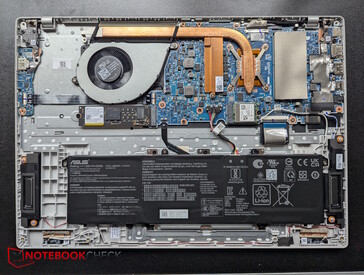
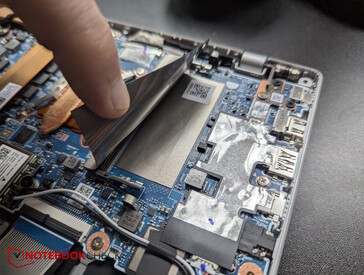
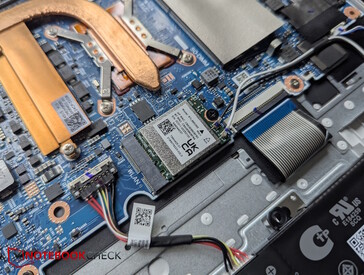
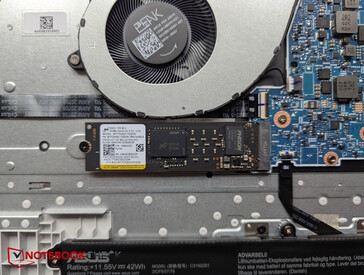

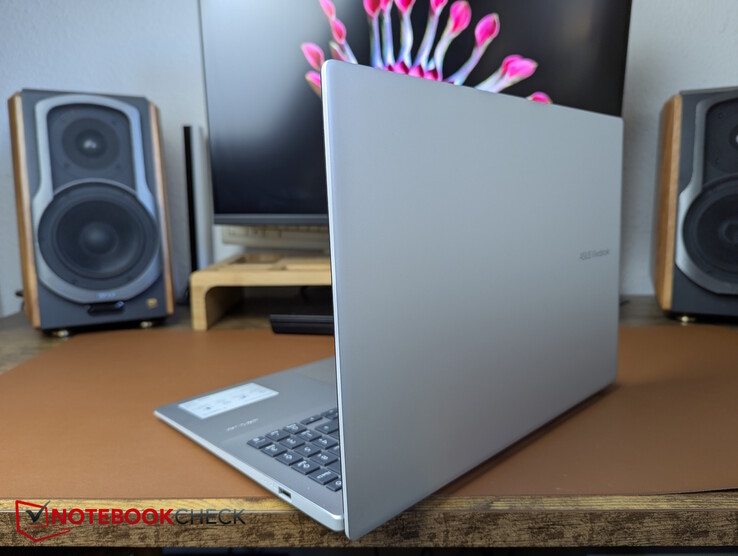










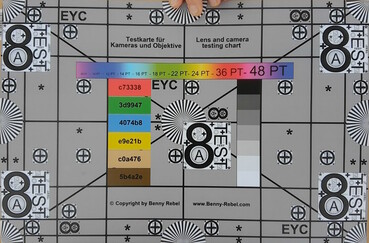

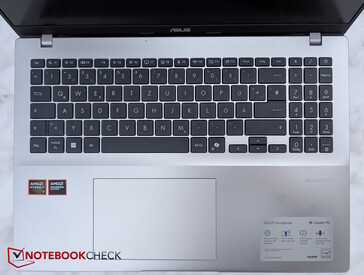
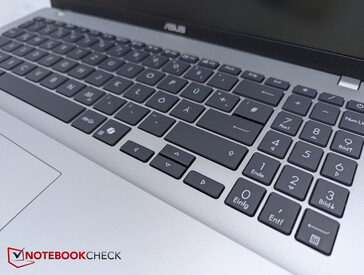
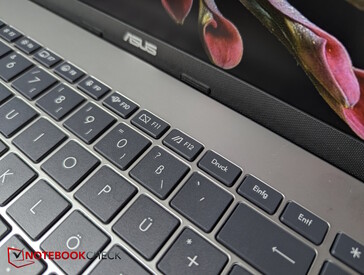
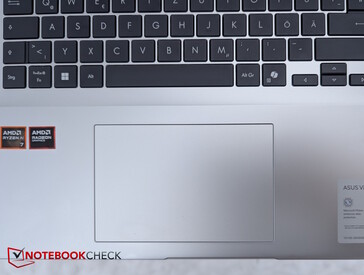
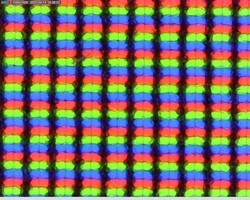
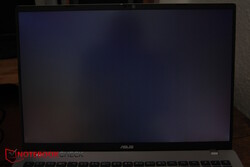
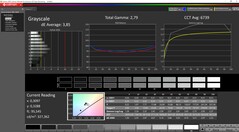
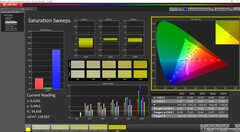
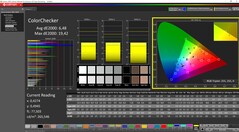

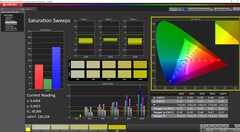
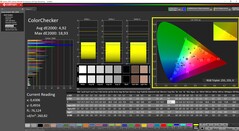
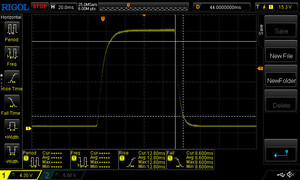
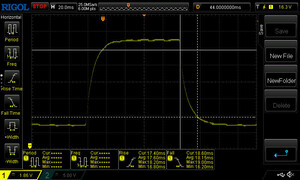
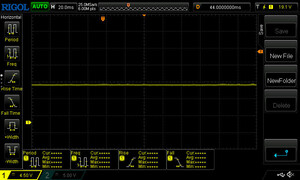





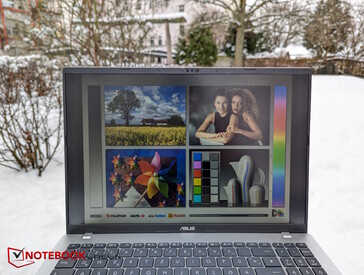
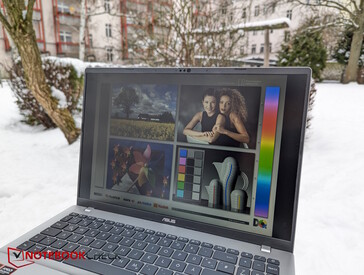



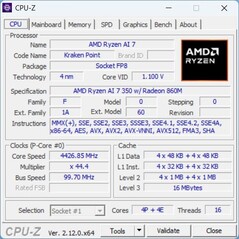
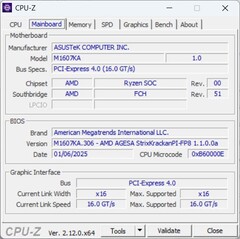
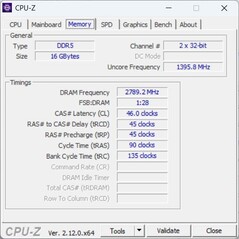
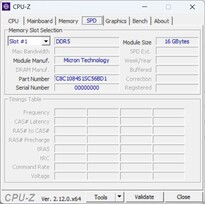
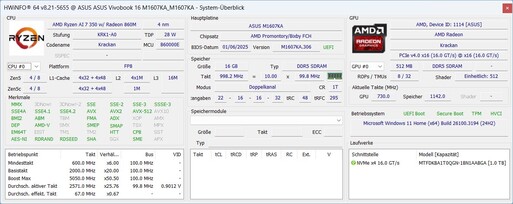
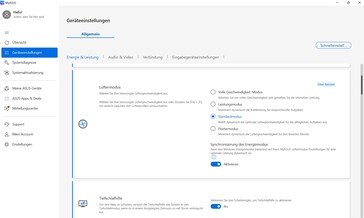
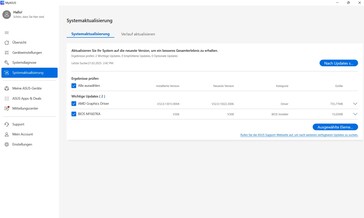
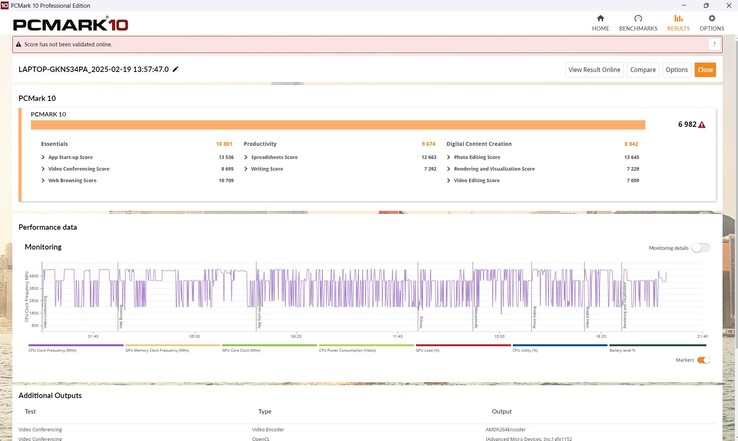
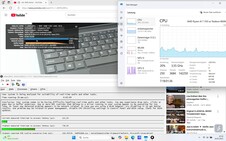
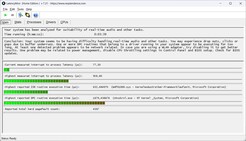
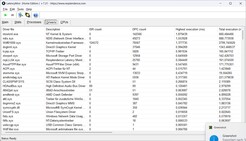
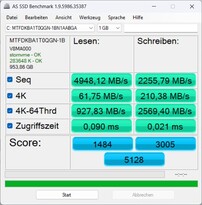
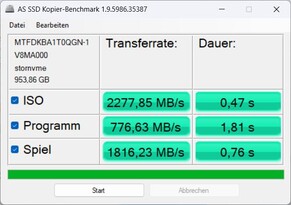
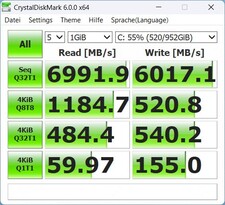

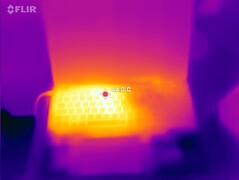
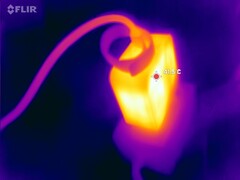
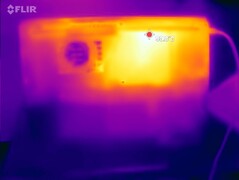
 Total Sustainability Score:
Total Sustainability Score: 